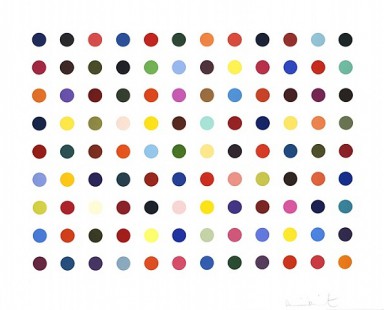Market
Florida Pastor Convicted of Selling Forged Damien Hirst Paintings
Kevin Sutherland could be sentenced for up to seven years in jail.

Kevin Sutherland could be sentenced for up to seven years in jail.

Sarah Cascone

Florida pastor Kevin Sutherland has had his day in court. Unfortunately for him, it culminated in a conviction for selling fake Damien Hirst paintings.
Deliberations, which took place yesterday, lasted five hours. As reported by the New York Times, the jury found him guilty of second-degree attempted grand larceny.
A part-time art dealer since 2010, Sutherland’s primary business is running his 200-member congregation, the Mosaic Miami Church. He got his start in art by trading cowboy art on eBay before venturing into the profitable Hirst market.
Sutherland purchased his first supposed Hirst dot prints in August 2010, and was able to sell them for a $7,000 profit. Those prints, however, were fake, created by California forger Vincent Lopreto, who sold dozens of bootleg Hirsts on eBay, each with equally worthless certificates of authenticity.
Lopreto, who has previously served time for similar crimes, was arrested in October. In January, he and his business partner, Ronald Bell, pleaded guilty to identity theft and fraud. In order to receive a less punitive sentence, they agreed to testify against Sutherland.
While Hirst is perhaps best known for preserving sharks and other animals in tanks of formaldehyde, he also has created a series of minimalist polka dot paintings and abstract round spin paintings. Often produced by his assistants, these easy-to-copy works were the focus of the Lopreto forgery scheme.
The pastor’s lawyer maintains that his client is an art market neophyte, unable to recognize that the paintings were fake. But the prosecution argued that Sutherland was in fact informed about the artworks’ worthless nature.
After the success of that first Hirst sale in August 2010, Sutherland bought additional three dot and two spin paintings from Lopreto (who was dealing under the assumed name of Byron Grace). In December 2012, Sutherland offered a Hirst Spin painting to Sotheby’s, which initially told him it could fetch up to $100,000 at its March auction. Then, in late January of 2103, the auction house changed its tune after contacting the artist’s London studio, Science Ltd. The sale was called off, and an expert informed Sutherland that “there was a problem with the work,” encouraging him to contact Science Ltd. for more information. In his testimony, Sutherland claimed that Sotheby’s was vague and did not explicitly tell him the work was a forgery.
Despite the bad news from the auction house, Sutherland was determined to sell the works. When a New York dealer named Mike Conti emailed Sutherland asking him if had any Hirst artworks for sale, the pastor-turned-dealer offered him the whole lot to the tune of $185,000.
Mike Conti, however, was really Michael Dorto, an undercover New York City detective. Science Ltd. had contacted the Manhattan district attorney’s office when Sotheby’s approached them about the forgery.
In phone conversations recorded by the police, Sutherland assured his would-be buyer that “everything’s good” and that as far as the artwork’s authenticity was concerned, “I have no issues that I know of.” Prosecutors latched onto those damning statements as evidence that Sutherland willfully chose to sell work that he knew was fake. The jury agreed.
Following the verdict, Sutherland’s lawyer promised “to look into all of our options” for an appeal.
Hirst meanwhile, recently promised to come clean about his own youthful experiences on the wrong side of the law. The artist is currently working with ghostwriter James Fox on an autobiography that, as artnet News reported yesterday, will recount how Hirst grew up in a “semi-criminal, often violent milieu.”
Now, Sutherland awaits his May 19 sentencing, which could place him on probation or behind bars for up to seven years.